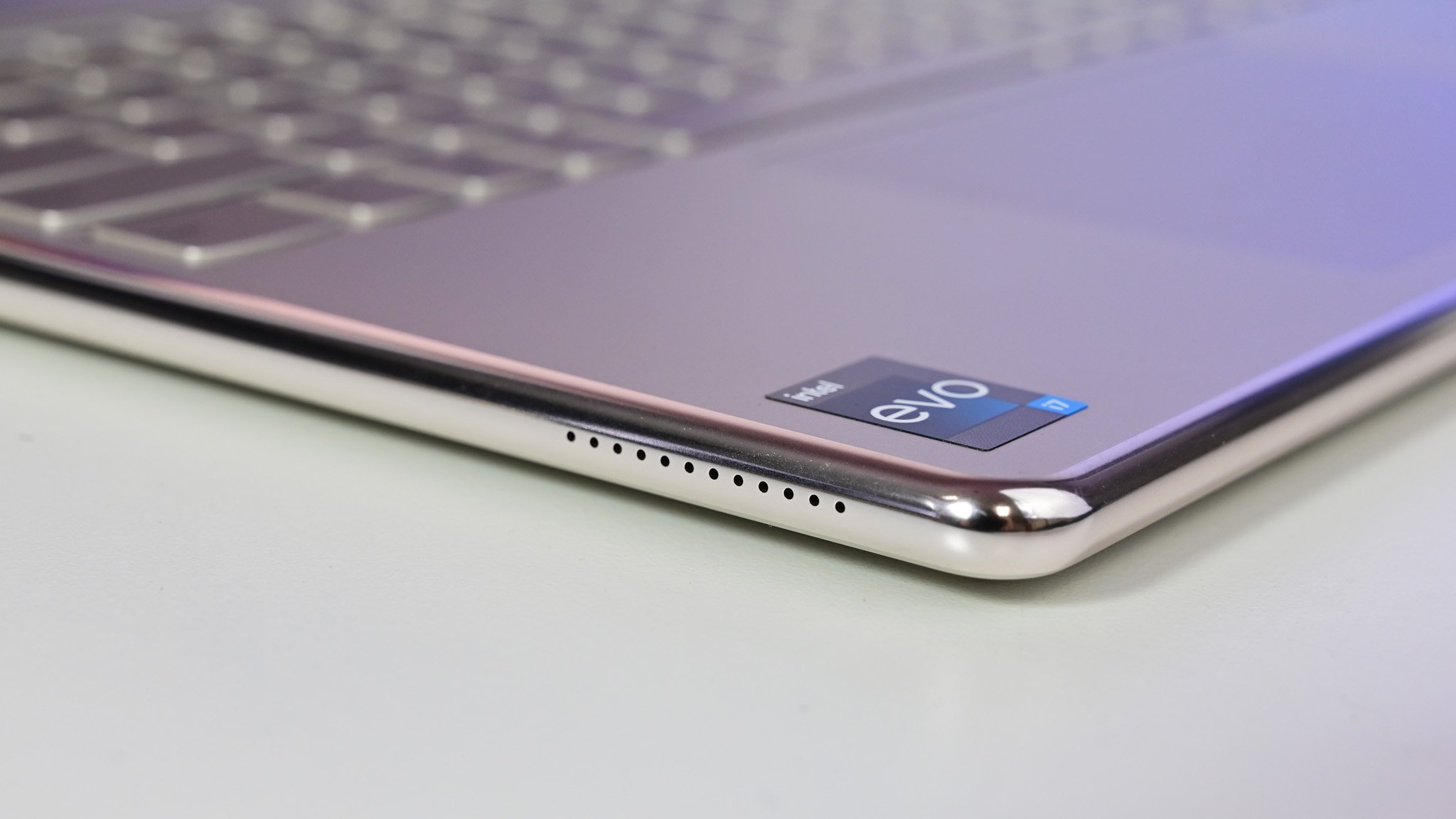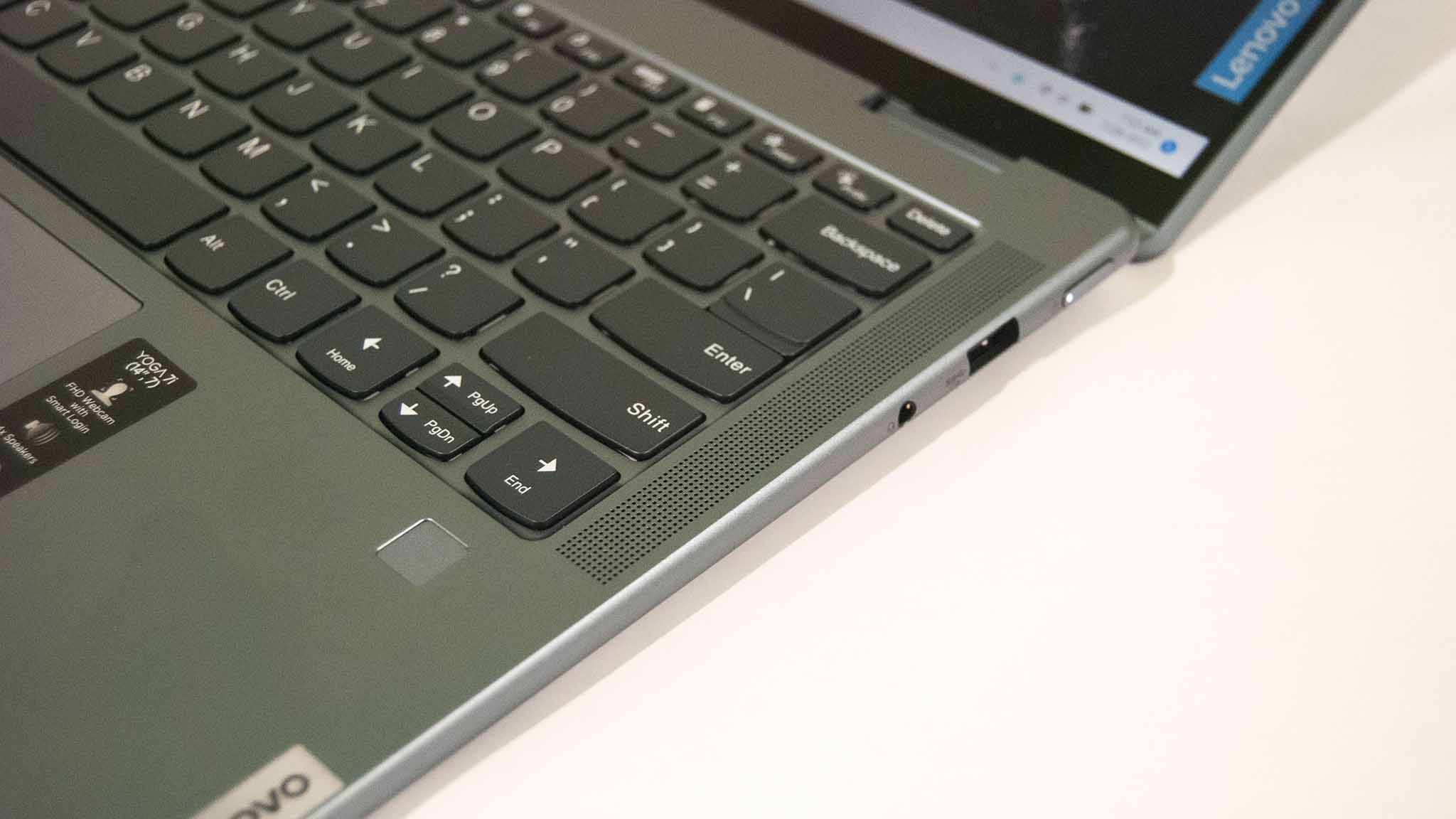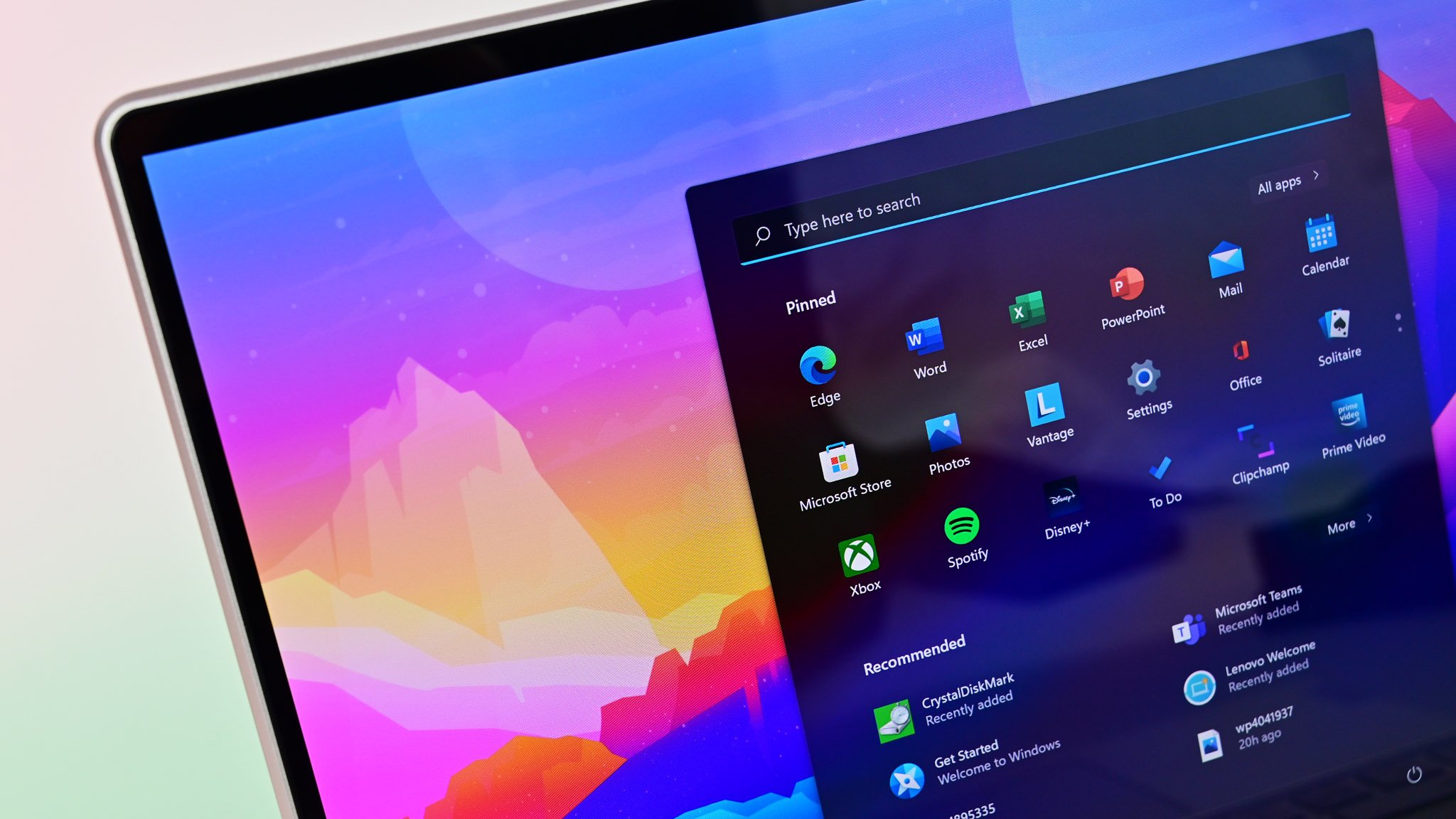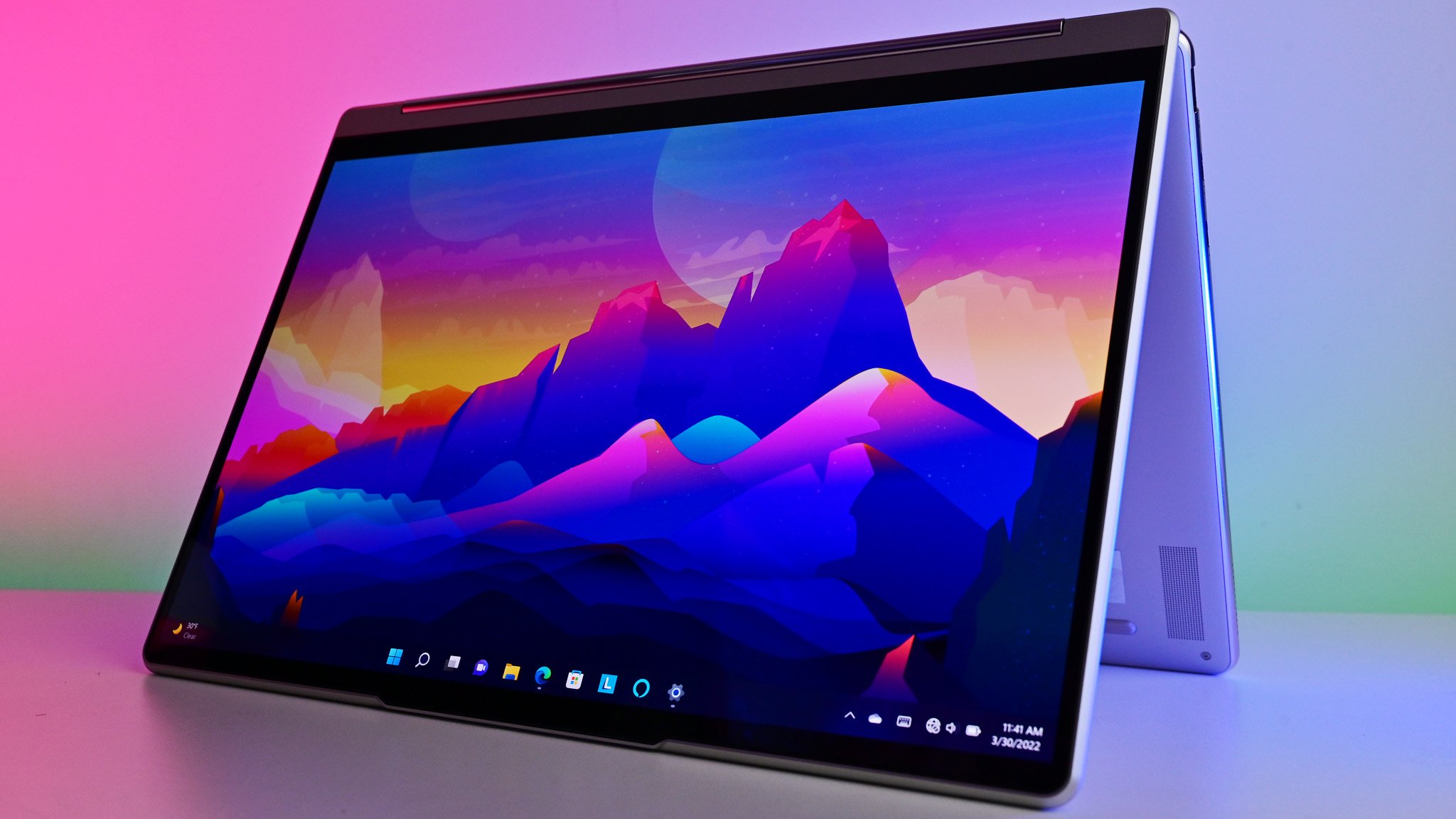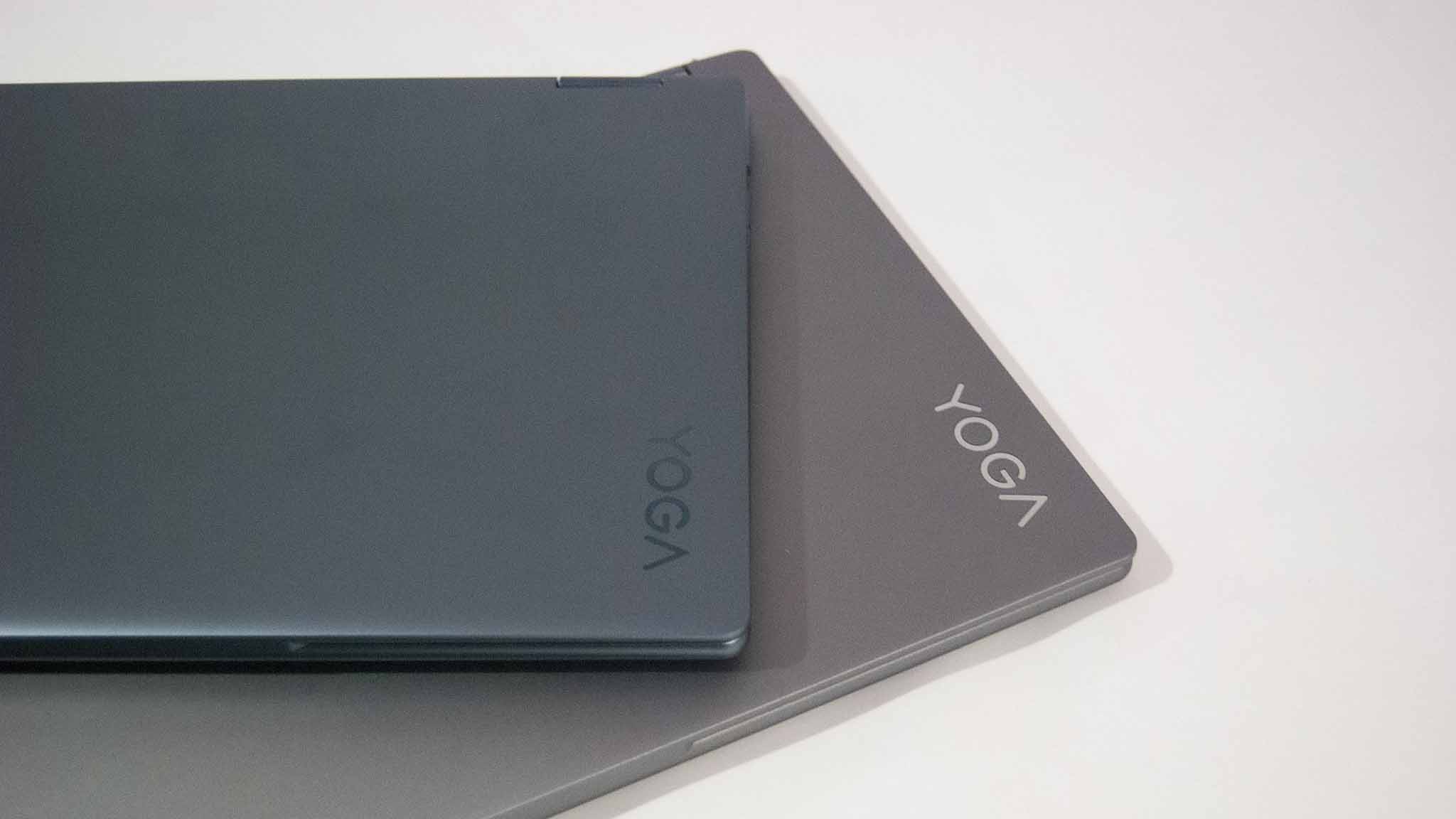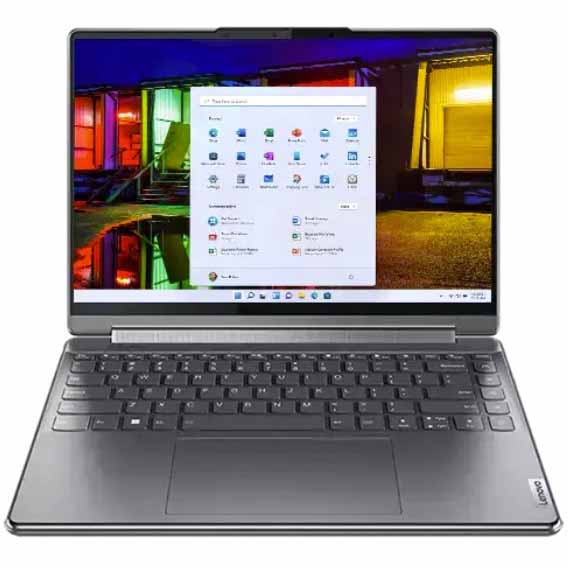
The Yoga 9i 14 (Gen 7) is one of the best overall laptops available today thanks to incredible displays, innovative soundbar hinge, included active pen and sleeve, and a refined design with rounded edges. It costs more than the Yoga 7i 14, but its premium features are worth it if you have the budget.
Pros
- Intel 12th Gen is quite powerful
- Outstanding 14-inch WQHD+ 90Hz OLED panel
- Solid audio performance
- Dedicated keys for modern PC features
- Pen and sleeve included
Cons
- Battery life is only OK
- Display could use a few more features
- No option for 4G or 5G
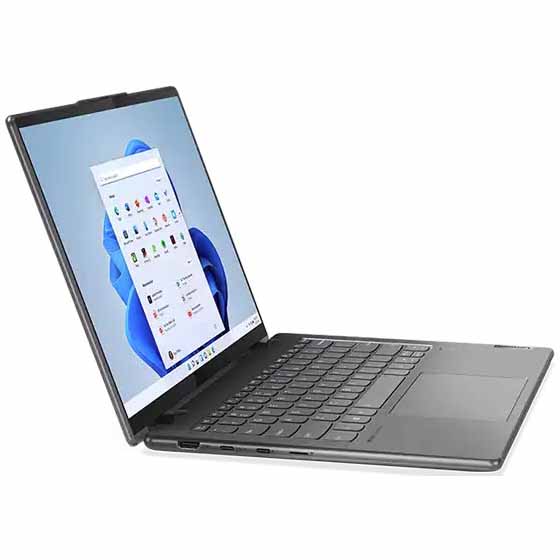
Lenovo's Yoga 7i 14 (Gen 7) shares a lot of similar design cues and features, but it's more affordable than the Yoga 9i. If you don't mind missing out on the Intel P-Series CPU performance, soundbar hinge, and a few other premium additions, this is still a fantastic convertible laptop.
Pros
- New high-res displays with 16:10 aspect ratio, Dolby Vision
- Gorgeous aluminum craftsmanship with new rounded edges
- 12th Gen Intel Core CPUs and Intel Evo certification
- Enormous touchpads, comfortable keyboards, quad speakers with Dolby Atmos
- FHD camera with IR hybrid and privacy shutter
Cons
- Active pen not included
- SSD is relatively slow despite PCIe 4.0 standard
- Displays have glossy finish
Lenovo's Yoga 9i 14 and Yoga 7i 14 are close siblings that share a lot of features and design cues. The former is our choice for the overall best Windows laptop, while the latter isn't far behind — especially for those who want to save a bit of money. There's likewise a Yoga 7i 16 for those who need a bit more screen space and some extra power, but for this comparison I'm focusing only on the smaller version. Check out my double Lenovo Yoga 7i 14 and 16 (Gen 7) review for a closer look at these PCs.
The Yoga 9i 14 currently starts at about $1,450 at Lenovo, with plenty of configuration options available. You should also be able to find some models for sale at third-party retailers like Best Buy and Walmart.
The Yoga 7i 14 currently starts at about $1,000 at Lenovo, likewise with plenty of configurations available. Models can also be found notably at Best Buy, where prices currently start at about $700.
Here's a look at the specifications that make up two of the best Lenovo laptops available today.
| Header Cell - Column 0 | Lenovo Yoga 9i 14 (Gen 7) | Lenovo Yoga 7i 14 (Gen 7) |
|---|---|---|
OS | Windows 11 Home, Windows 11 Pro | Windows 11 Home, Windows 11 Pro |
Processor | 12th Gen Intel | 12th Gen Intel |
| Row 2 - Cell 0 | Core i5-1240P, Core i7-1260P, Core i7-1280P | Core i5-1235U, Core i7-1255U |
RAM | 8GB, 16GB LPDDR5-5200 | 8GB, 16GB LPDDR5-4800 |
Graphics | Intel Iris Xe | Intel Iris Xe |
Storage | 256GB, 512GB, 1TB M.2 PCIe 4.0 NVMe SSD | 512GB, 1TB M.2 PCIe 4.0 NVMe SSD |
Display | 14 inches, 16:10 aspect ratio, Dolby Vision, touch | 14 inches, 16:10 aspect ratio, Dolby Vision, touch |
| Row 7 - Cell 0 | 1920x1200 (FHD+), IPS, 400 nits, glossy, 100% sRGB, 60Hz | 2240x1400 (2.2K), IPS, 300 nits, glossy, 100% sRGB |
| Row 8 - Cell 0 | 2880x1800 (2.8K), OLED, 400 nits, glossy, 100% DCI-P3, 90Hz, VESA DisplayHDR 500 True Black | 2880x1800 (2.8K), OLED, 400 nits, glossy, 100% DCI-P3, 90Hz, VESA DisplayHDR 500 True Black |
| Row 9 - Cell 0 | 3840x2400 (UHD+), OLED, 400 nits, glossy, 100% DCI-P3, 60Hz, VESA DisplayHDR 500 True Black | Row 9 - Cell 2 |
Pen | Lenovo Precision Pen 2 (included) | Not included |
Ports | Two Thunderbolt 4, two USB-A 3.2 (Gen 2), 3.5mm audio | Two Thunderbolt 4, USB-A 3.2 (Gen 1), HDMI, microSD card reader, 3.5mm audio |
Audio | Dual 2W tweeters, dual 3W woofers, Dolby Atmos | Dual 2W tweeters, dual 2W woofers, Dolby Atmos |
| Row 13 - Cell 0 | Soundbar hinge, dual array microphones | Top- and bottom-firing speakers, dual array microphones |
Wireless | Wi-Fi 6E, Bluetooth 5.2 | Wi-Fi 6E, Bluetooth 5.2 |
Camera | Front-facing 1080p, IR, HPD | Front-facing 1080p, IR |
Security | Firmware TPM 2.0, fingerprint reader, camera shutter, IR, HPD | Firmware TPM 2.0, fingerprint reader, camera shutter, IR |
Battery | 75Wh | 71Wh |
Dimensions | 12.52 x 9.06 x 0.6 inches (318mm x 230mm x 15.25mm) | 12.47 x 8.67 x 0.68 inches (316.66mm x 220.25mm x 17.35mm) |
Weight | From 3.09 pounds (1.4kg) | From 3.2 pounds (1.45kg) |
Color | Oatmeal, Storm Grey | Stone Blue, Storm Grey |
Design and features
The Yoga 9i 14 received a design overhaul for its seventh generation, including taller 16:10 aspect ratio for the display, FHD webcam, smooth and rounded chassis edges, a lack of siloed pen, and a larger touchpad. In his Lenovo Yoga 9i 14 (Gen 7) review, Executive Editor Daniel Rubino said it "all adds up to a gorgeous laptop that delivers a massive performance jump over the previous generation."
Many of those changes have filtered down to the Yoga 7i 14 (Gen 7). It has the same rounded chassis, the touchpad is larger, the screen is now 16:10, there are four speakers, and it has an FHD webcam. The Yoga 7i has a slightly smaller footprint, but it is a couple of millimeters thicker and weighs just a bit more. The edges are not polished like on the Yoga 9i; instead there's a matte finish throughout that does a good job of hiding fingerprints.
The Yoga 9i can be had in Oatmeal or Storm Grey colors, while the Yoga 7i has Stone Blue and Storm Grey colors.
All the latest news, reviews, and guides for Windows and Xbox diehards.
The Yoga 9i's soundbar hinge features quad speakers with a total 10W output. It rotates with the laptop, delivering unmuffled audio no matter how you're holding the PC. The Yoga 7i doesn't have the same hinge, but it does have dual speakers flanking the keyboard as well as dual speakers on the bottom of the PC for an 8W total output. Both laptops feature Dolby Atmos for spatial audio and an overall better listening experience.
The webcams each offer a crisp 1080p picture, and both laptops offer IR facial recognition through Windows Hello. Taking things further, the Yoga 9i includes human presence detection that can automatically log in and log out of Windows when you approach or depart. Both laptops have built-in physical webcam shutters for added privacy.
Ports are nearly the same, though the Yoga 7i does have more variety. The more affordable laptop offers dual Thunderbolt 4, one USB-A 3.2 (Gen 1), HDMI, a microSD card reader, and 3.5mm audio. The Yoga 9i has dual Thunderbolt 4, dual USB-A 3.2 (Gen 2), and 3.5mm audio. The Yoga 7i might be the better choice if you often hook up to a TV or use removable storage, though both can be connected to one of the best Thunderbolt docks to expand connectivity.
Wi-Fi 6E and Bluetooth 5.2 are onboard both laptops. Rounding things out is a fingerprint reader for even more security.
Displays and inking
Both Yoga convertibles have 14-inch touch displays with a taller 16:10 aspect ratio, Dolby Vision, and inking capabilities, making your decision quite a bit easier. You're going to get a stellar display no matter which one you choose, but there are certainly some notable differences when you start looking at the color reproduction, resolution, and key features.
The Yoga 7i 14 (Gen 7) has a couple of different touch display options available. The most affordable option has a 2240x1400 (2.2K) resolution, IPS panel with glossy finish, about 300 nits brightness, and TÜV Low Blue Light. In my testing, this display hit 99% sRGB, 82% AdobeRGB, and 85% DCI-P3 color reproduction.
The other option for the Yoga 7i has a boosted 2880x1800 (2.8K) resolution with OLED panel, 400 nits brightness, glossy finish, 90Hz refresh rate, VESA DisplayHDR True Black 500, TÜV Low Blue Light, and 100% DCI-P3 color. This is an unreal display that's also available in the Yoga 9i 14. In our testing, it hit 100% sRGB, 95% AdobeRGB, and 100% DCI-P3 color.
You'll have to opt for the Yoga 9i 14 if you'd like to go with a higher resolution. Along with the 2.8K screen, there's a 3840x2400 (UHD+) option with OLED panel, 400 nits brightness, glossy finish, 100% DCI-P3 color, 60Hz refresh rate, and VESA DisplayHDR True Black 500. And if you're looking to save some money, the Yoga 9i 14 also offers an FHD+ screen with 400 nits, 100% sRGB color, and 60Hz refresh rate.
If you're a fan of watching movies and TV, the OLED displays with HDR will be the best option. If you're just buying the laptop to handle productivity work, you can no doubt save some money here by opting for the IPS screens.
All displays have inking capabilities, but only the Yoga 9i 14 has an included pen. You'll have to pick one up separately for the Yoga 7i 14.
Performance
The Yoga 9i 14 (Gen 7) comes with Intel's 12th Gen Core P-Series CPUs, up to a Core i7-1280P with 14 total cores. The CPU is joined by up to 16GB of LPDDR5-5200MHz dual-channel RAM and up to a 1TB M.2 PCIe 4.0 NVMe SSD.
On the other hand, the Yoga 7i 14 (Gen 7) is primarily available with Intel's 12th Gen Core U-Series CPUs with up to 10 cores in the i7-1255U. It can also be configured with up to 16GB of LPDDR5-4800MHz dual-channel RAM and up to a 1TB M.2 PCIe 4.0 NVMe SSD.
The Yoga 7i does have Intel P-Series CPUs listed in some documentation, but I've yet to see them available for purchase. Take a look here at how the U- and P-Series processors compare with results from our in-house benchmarking. You're going to get significantly better performance if you stick with the P-Series chips.
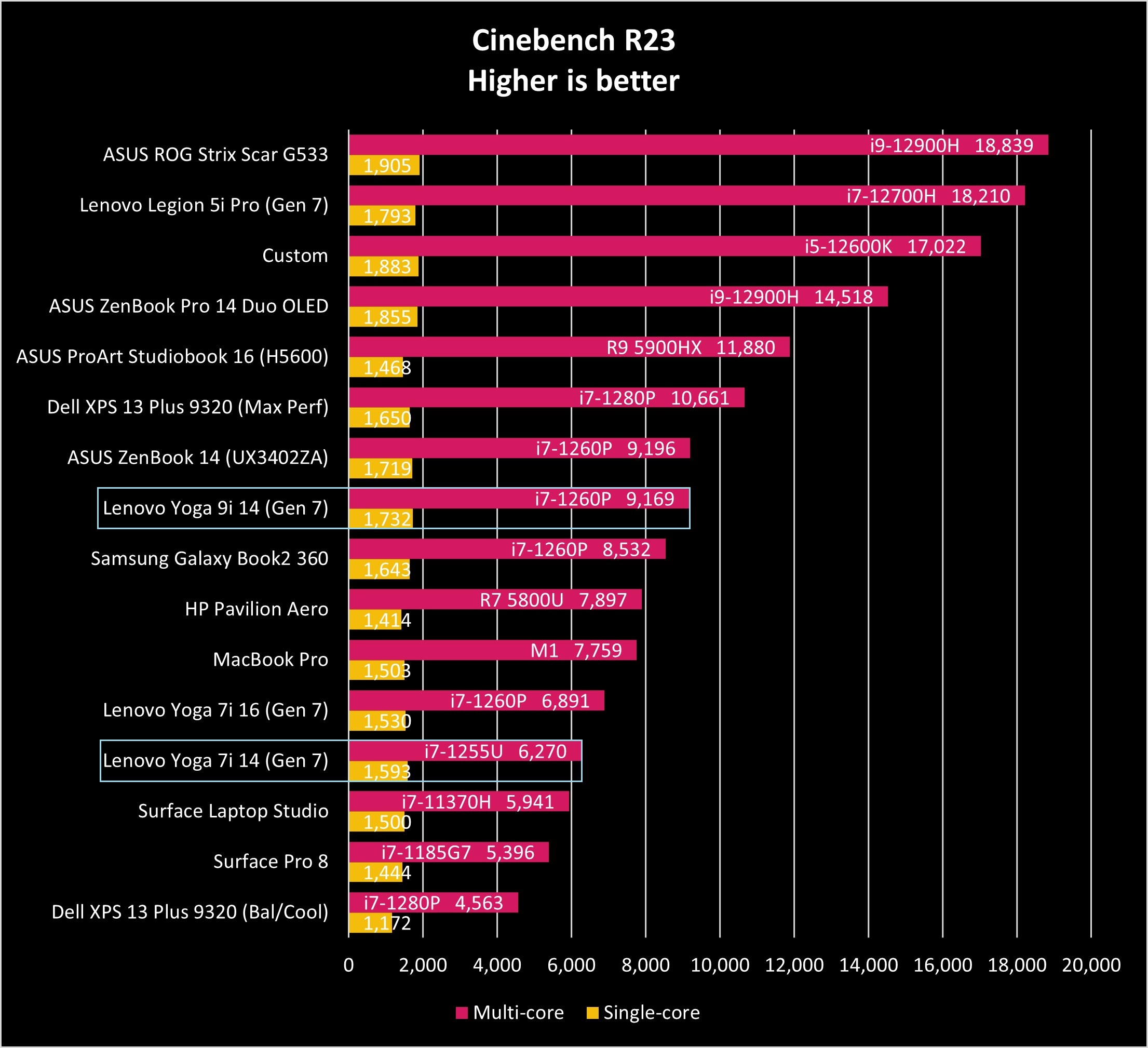
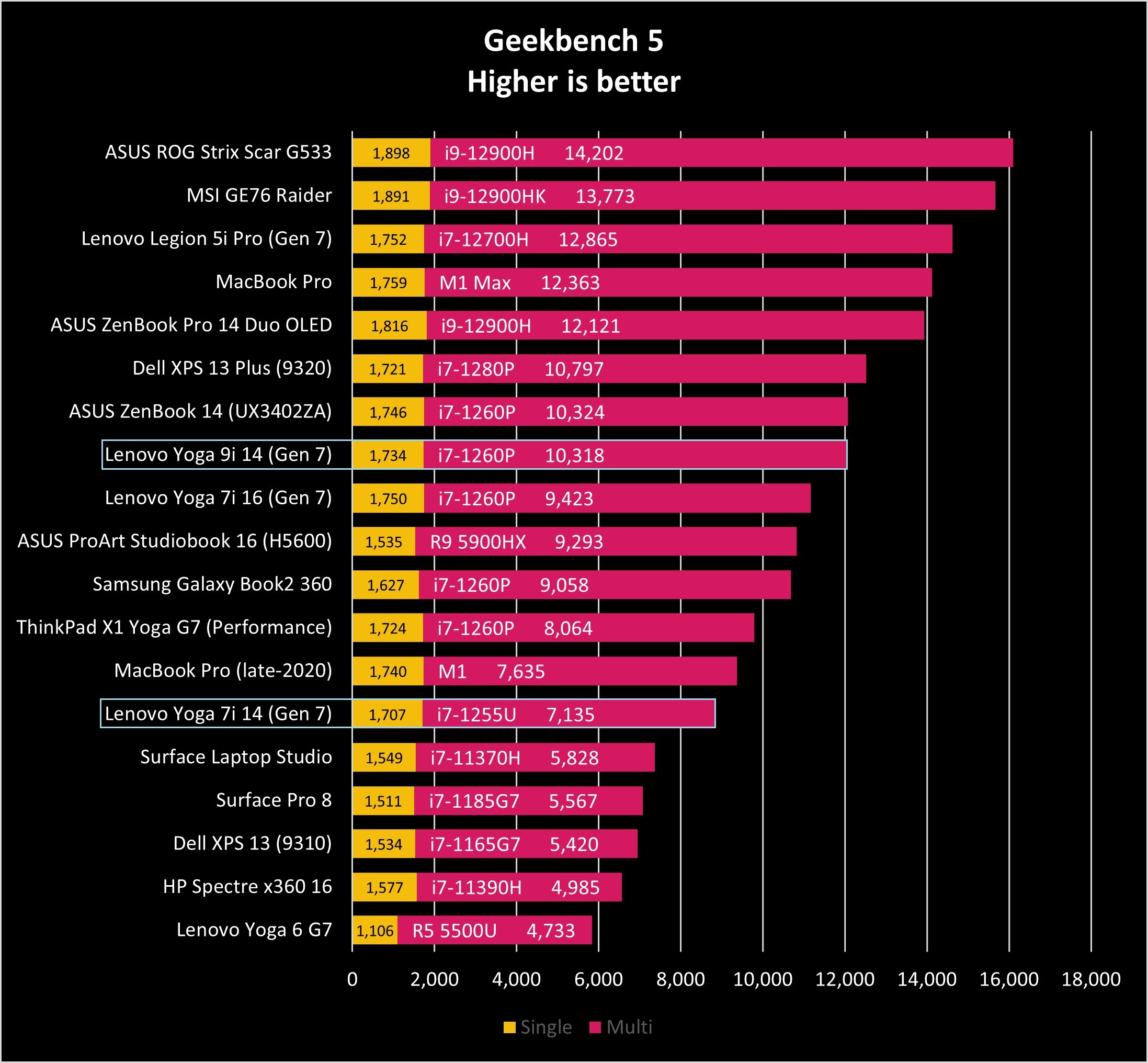
There are a couple of things to make note of beyond the CPUs. RAM in the Yoga 7i is slightly slower, and its PCIe 4.0 SSD isn't nearly as fast as that in the Yoga 9i. In fact, storage was much closer to PCIe 3.0 speeds in my Yoga 7i testing.
If you want the utmost performance from your PC, you will want to stick with the Yoga 9i. If you're happy with good performance that can nevertheless make easy work of most productivity tasks, the Yoga 7i will save you some big money.
As for battery life, the Yoga 9i 14 with 2.8K OLED display and Core i7-1260P CPU lasted 8 hours and 54 minutes in PCMark 10's Modern Office rundown test. In the same test, the Yoga 7i 14 with 2.2K IPS display and Core i7-1255U CPU lasted 14 hours and 38 minutes. The OLED display no doubt saps a lot of life, as does the P-Series Intel CPU. Actual time will fluctuate depending on your use case, but the Yoga 7i 14 should deliver better battery life overall.

The Yoga 9i 14 offers superior performance, higher-res UHD+ OLED display with included pen, soundbar hinge, and a host of other premium features not found in the Yoga 7i 14. You will pay more, but it's the right choice if you want the absolute best.

The Yoga 7i 14 (Gen 7) isn't quite as powerful as the Yoga 9i, but the battery goes longer, it's way more affordable, it has more generous port selection, and it shares a lot of design cues. If you don't mind making some compromises, this is a great laptop that won't empty your wallet.

Cale Hunt brings to Windows Central more than nine years of experience writing about laptops, PCs, accessories, games, and beyond. If it runs Windows or in some way complements the hardware, there’s a good chance he knows about it, has written about it, or is already busy testing it.

